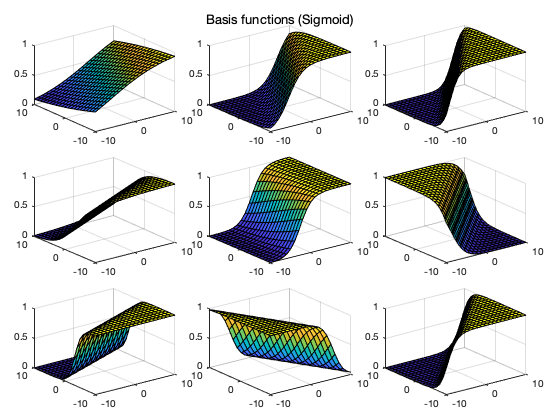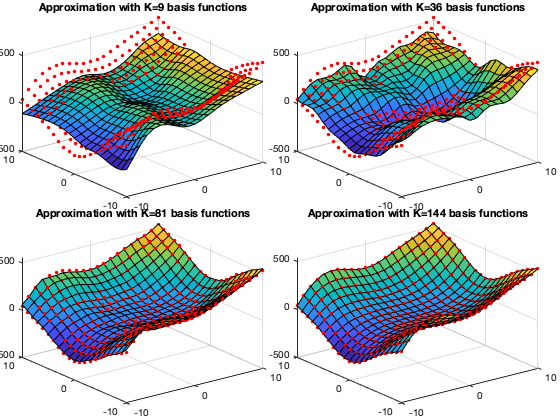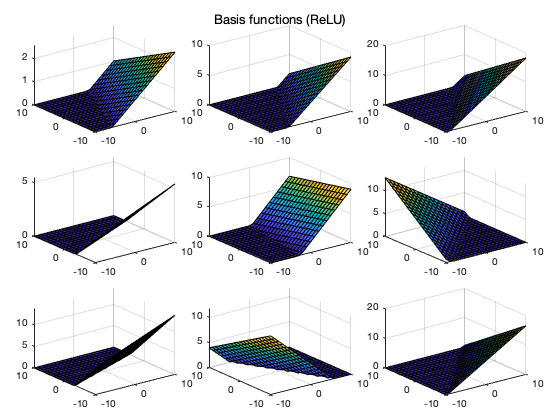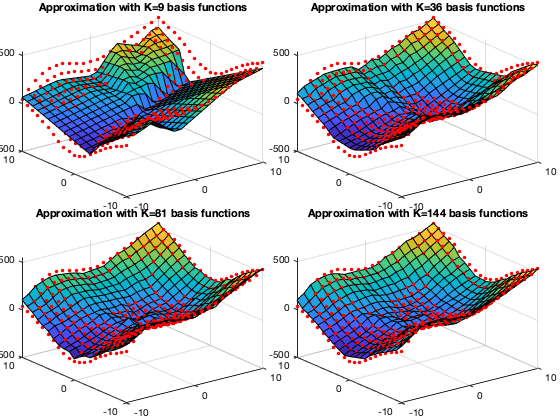Next: Bayesian Linear Regression Up: Regression Analysis and Classification Previous: Bias-Variance Tradeoff and Ridge
The method of linear regression considered previously can
be generalized to model nonlinear relationships between
the dependent variable 
![${\bf x}=[x_1,\cdots,x_d]^T$](img491.svg)


 |
(145) |
 is
the basis functions parameterized by
is
the basis functions parameterized by
 that
span the function space in which
that
span the function space in which  resides. Some
of the common basis functions include the following:
resides. Some
of the common basis functions include the following:
 |
(146) |
 is
is  th order polynomial
function.
th order polynomial
function.
 or or |
(147) |
 is similar to the sine or
cosine series expansion of the given function.
is similar to the sine or
cosine series expansion of the given function.
 |
(148) |
 .
.
 |
(149) |
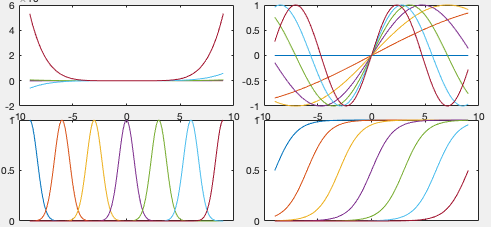
The original d-dimensional data space spanned by




 |
(150) |
 is a
is a  matrix of which the
component in the nth row and kth column is the kth basis
function evaluated at the nth data point:
Typically there are many more sample data points than the basis
functions, i.e.,
matrix of which the
component in the nth row and kth column is the kth basis
function evaluated at the nth data point:
Typically there are many more sample data points than the basis
functions, i.e.,  .
.
As the nonlinear model





 is the
is the  pseudo-inverse
of the
pseudo-inverse
of the  matrix
matrix
 . Now we get the output
of the regression model
. Now we get the output
of the regression model
 |
(154) |
The Matlab code segment belows shows the essential part
of the algorithm, where 



![${\bf y}=[y_1,\cdots,y_N]^T$](img499.svg)



for n=1:N
for k=1:K
Phi(n,k)=phi(x(n),c(k));
end
end
w=pinv(Phi)*y(x); % weight vector by LS method
yhat=Phi*w; % reconstructed function
Example:
The plots below show the approximations of a function using linear regression based on four different types of basis functions listed above. We see that the more basis functions are used, the more accurately the given funtion is approximated.
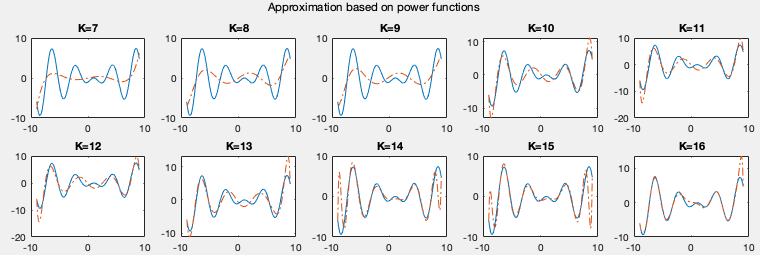
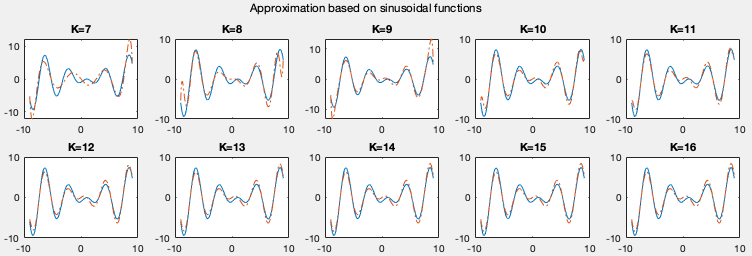
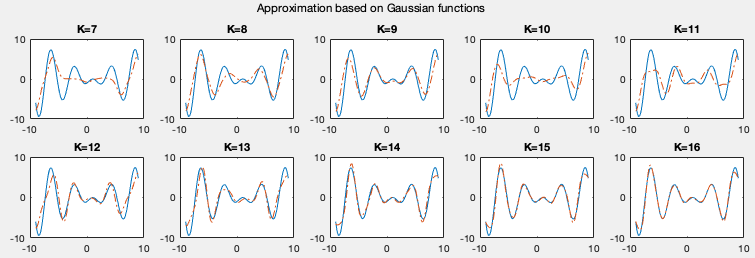
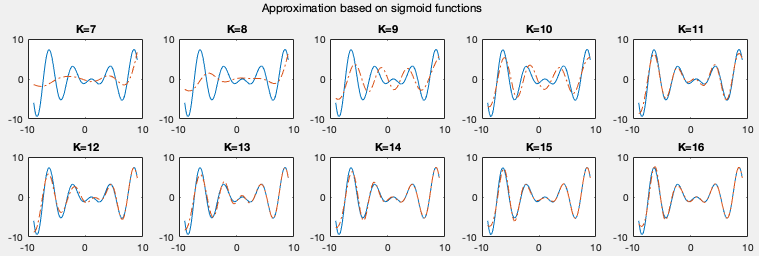
Example:
The plots below show the approximations of a 2-D function


The figure below shows a 2-D function (left) and the

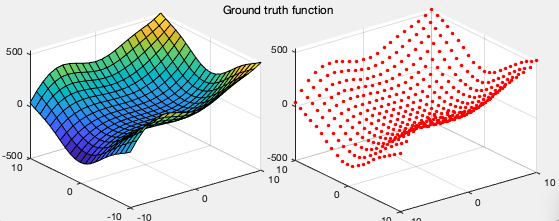
The figure below shows 
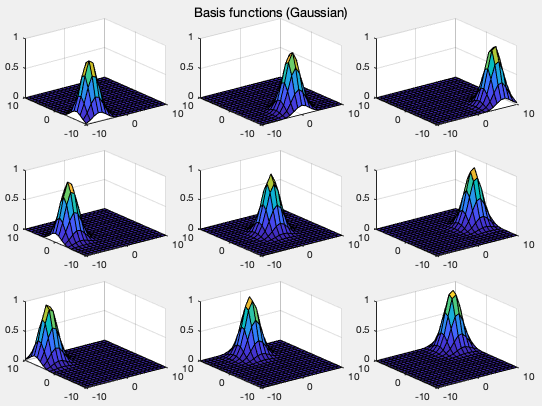
The figure below shows the approximated functions
based on different number 
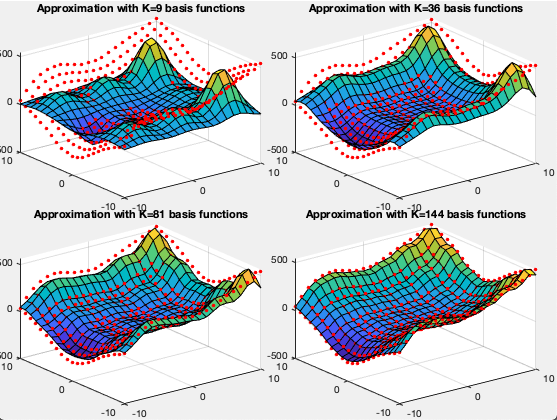
In addition to the different types of basis functions listed above, we further consider the following basis functions:
where in, called activation function, can take
some different forms such as
in, called activation function, can take
some different forms such as
 |
(156) |
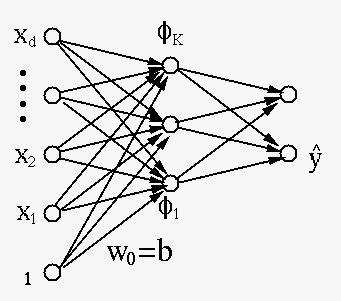
As shown in figure, the 












Example
This method of regression based on basis functions is applied
to approximating the same 2-D function








The Matlab code segment below shows the essential part
of the program for this example, where 
g=@(x) x.*(x>0); % ReLU activation function, or
g=@(x) 1/(1+exp(-x)); % Sigmoid activation function
g=@(x,w,b)g(w'*x+b); % the basis function
[X,Y]=meshgrid(xmin:1:xmax, ymin:1:ymax); % define 2-D points
nx=size(X,2); % number of samples in first dimension
ny=size(Y,1); % number of samples in second dimension
N=nx*ny; % total number of data samples
Phi=zeros(N,K); % K basis functions evaluated at N sample points
W=1-2*rand(2,K); % random initialization of weights
b=1-2*rand(1,K); % and biases for K basis functions
n=0;
for i=1:nx
x(1)=X(1,i); % first component
for j=1:ny
x(2)=Y(j,1); % second component
n=n+1; % of the nth sample
Y(i,j)=func(x); % function evalued at the sample
for k=1:K % basis functions evaluated at the sample
Phi(n,k)=g(x,W(:,k),b(k));
end
end
end
y=reshape(Y,N,1); % convert function values to vector
w=pinv(Phi)*y; % find weights by LS method
yhat=Phi*w; % reconstructed function
Yhat=reshape(yhat,m,n); % convert vector y to 2-D to compare w/ Y
The figures below show the regression results as well as the basis functions used, based on both the sigmoid and ReLU activation functions. We note that as the function is better approximated when more basis functions are used in the regression.
